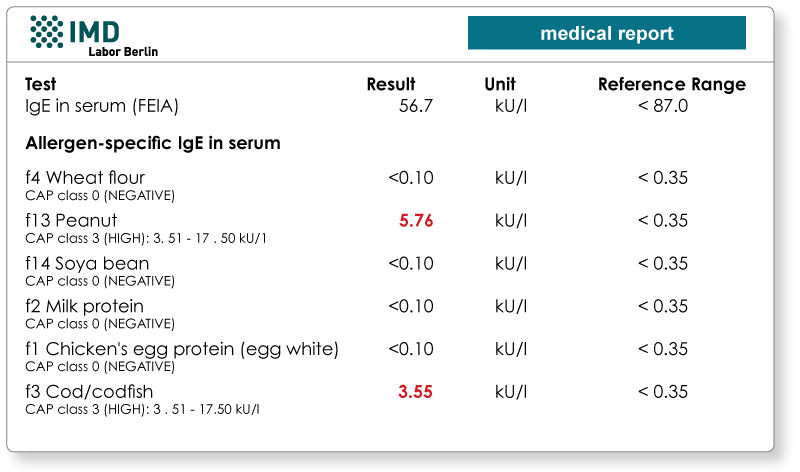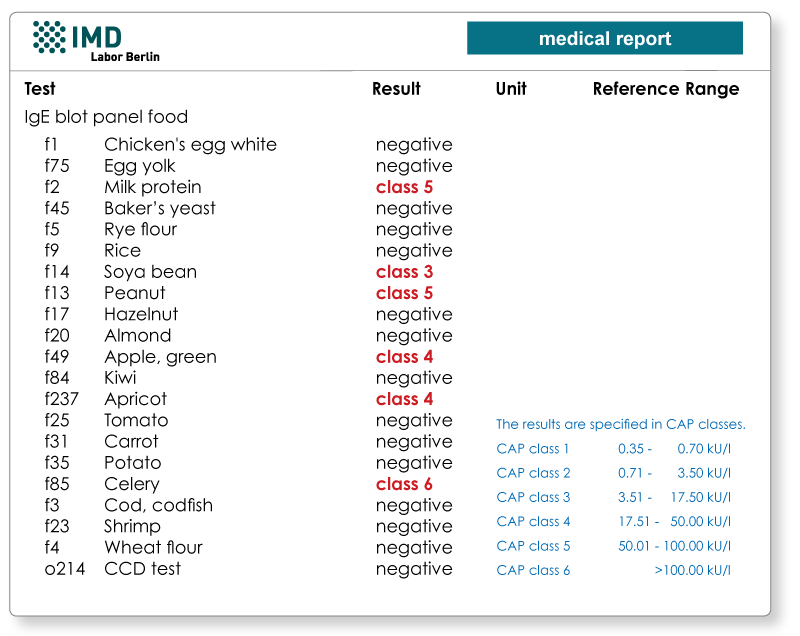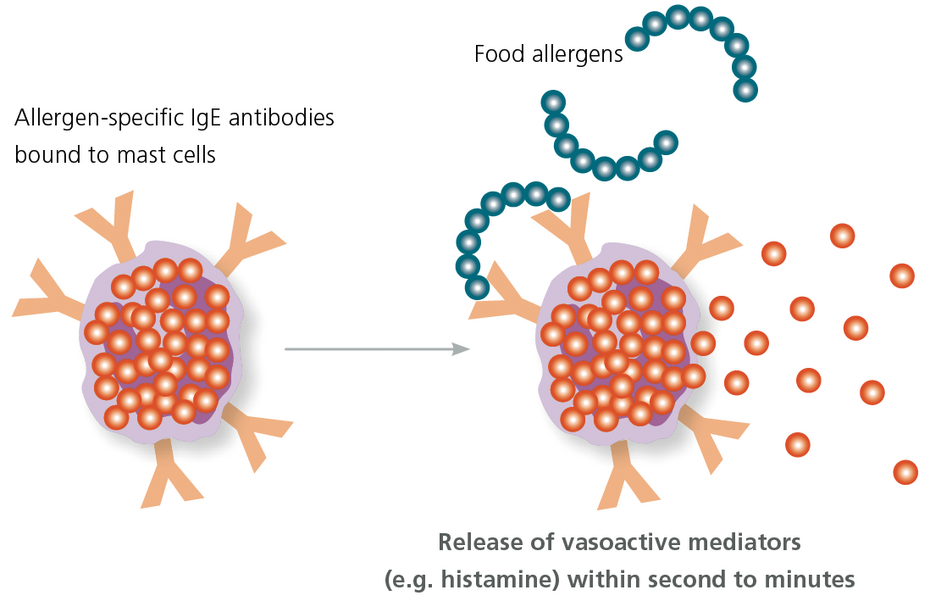Type I allergy
Food allergies
An allergy is a dysfunction of the immune system with an increased immune response against harmless foreign substances. The term allergy, however, is used not for every form of inflammation induced by a foreign substance, but only when it is caused by an existing individual sensitisation. This sensitisation can be based on the formation of IgE antibodies (type I allergy) or specific T lymphocytes (type IV allergy).
Type I immediate-type allergies are IgE-mediated
Food allergies of type I (according to Coombs and Gell) are mediated by food-specific IgE antibodies. These IgE antibodies are bound to mast cells which, on contact with the relevant allergen, are activated and stimulated to degranulate. This is followed by the release of histamine and a number of other mediators of allergic inflammation. This occurs directly after contact with the allergen, which is why with this type of allergy, symptoms such as itching, swelling in the mouth and throat, asthma, vomiting, and diarrhoea develop within a period of minutes up to a few hours following consumption of the food (hence immediate-type allergy). These symptoms are triggered in allergised patients by just very small quantities of the food allergen concerned.
In principle, any food can be an allergen. Life-threatening systemic reactions are typical for soy, peanut, nuts, fish, and crustaceans, for example. Laboratory diagnostics are carried out by testing for allergen-specific IgE antibodies in the blood. The detection of specific IgE for more than 200 foods is set up to be fully-automated (see allergy request form). Highly purified total extracts that are produced from native foods via lyophilisation are used as antigens in the IgE detection procedure.
The total IgE is unsuitable as a "screening test" for food allergies. In more than 40% of food allergies, the total IgE is normal (see sample result).

The food IgE blot – an alternative to the IgE CAP individual or group testing
The IgE blot is offered where IgE testing for food allergens would be used as a screening test. It is also a test for specific IgE. However, the procedure uses another technique that cost-effectively tests a defined profile of 20 allergens. The only disadvantage is that the allergen spectrum is unalterable and it therefore cannot be adapted based on the medical history.

Material
Detection of specific IgE (CAP testing): 1 ml Serum per allergen
IgE food blot (20 allergens): 1 ml of Serum
| It is now possible to obtain important additional information for different foods using molecular allergy testing. This involves the verification of cross-reactivities or evaluation of the risk of anaphylactic reactions in the case of known sensitisations. You can find more information here. |

